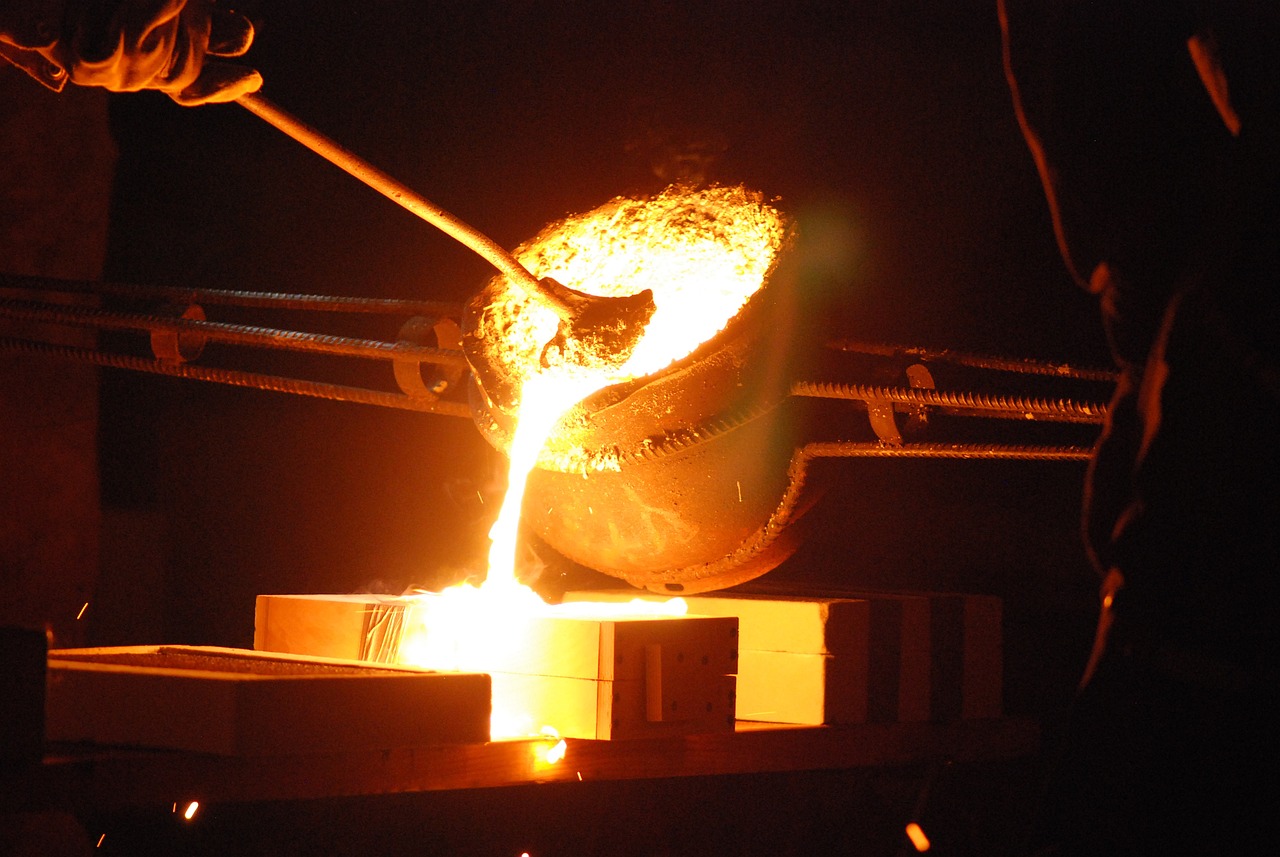
- 14.02.2025
- 520
The foundry industry in 2025 faces unprecedented challenges and opportunities. In light of technological advancements, increasing environmental regulations, and shifting market demands, companies must innovate to remain competitive. This article highlights the current trends, challenges, and potentials within the sector.
Technological Innovations
One of the biggest changes in the foundry industry is the increased adoption of digitization and automation. Technologies such as Artificial Intelligence (AI), robotics, and the Internet of Things (IoT) are increasingly being integrated into production processes. These innovations not only offer opportunities to enhance efficiency but also improve product quality and reduce costs.
Example: Predictive Maintenance By leveraging sensors and AI, machine conditions can be monitored in real-time. Maintenance needs are detected early, downtime is minimized, and the lifespan of equipment is extended. This practice not only reduces operating costs but also boosts competitiveness.
Another example is 3D printing, which is used in prototype development and increasingly in series production. This technology allows faster and more cost-effective manufacturing of complex shapes while reducing material consumption.
Focus on Sustainability
The pressure to operate more sustainably has significantly increased in the foundry industry. Stricter environmental regulations compel companies to reduce emissions and energy consumption. At the same time, customers demand environmentally responsible products.
Energy Efficiency A key approach is improving energy efficiency. Modern melting furnaces consume significantly less energy than their predecessors. Additionally, waste heat recovery is becoming increasingly important. Some foundries are already utilizing renewable energy to power their production processes.
Circular Economy Recycling also plays a crucial role. Many foundries use scrap metal as a raw material, which not only conserves resources but also improves the carbon footprint. Furthermore, companies are developing innovative methods to reuse sand and other production materials.
Challenges of a Skilled Labor Shortage
Another pressing issue is the shortage of qualified personnel. The foundry industry struggles with an image problem: many young people perceive the sector as outdated and unattractive. To counter this, companies are increasingly focusing on fostering young talent and providing further training.
Digitization as an Opportunity The growing digitization could help solve this problem. Automated systems and machines with intuitive user interfaces simplify tasks and make careers in the sector more appealing. Additionally, digital platforms provide opportunities for online training and remote maintenance, making employee qualification more flexible.
Global Market Trends
The foundry industry is heavily influenced by global developments. Rising protectionism in some countries and geopolitical tensions present challenges. At the same time, growing markets in Asia and Africa offer immense opportunities.
Electrification and Lightweight Construction The trend towards electromobility leads to an increasing demand for lightweight and high-performance materials. Foundries must specialize in producing aluminum and magnesium components to meet these demands. Simultaneously, new applications in the renewable energy sector, such as components for wind turbines, open up additional markets.
Supply Chains and Raw Material Prices The stability of supply chains remains a critical issue. Disrupted supply chains and rising raw material prices put pressure on companies' margins. Strategic partnerships and diversifying supply sources are crucial measures to mitigate risks.
The Path Forward
To thrive in this dynamic environment, foundries must remain flexible and adaptable. Innovation, sustainability, and talent development are key factors. Additionally, it is important to intensify dialogue with customers and suppliers to optimize the entire value chain.
Investments in Research and Development Companies that invest in research and development will have a long-term advantage. Whether through the development of new alloys or the optimization of production processes – innovation is key to competitiveness.
Collaboration and Networks Forming networks and collaborations within the industry can also be beneficial. Cluster initiatives, where companies, research institutions, and policymakers collaborate, can foster innovation and facilitate knowledge exchange.
Conclusion
The foundry industry in 2025 is a sector in transition. Technological advancements, a focus on sustainability, and the handling of global challenges offer both risks and opportunities. Companies willing to adapt and invest in the future will emerge stronger from this transformation. The coming years will be crucial in determining how the foundry industry positions itself in a rapidly changing world.
 Version for the visually impaired
Version for the visually impaired









